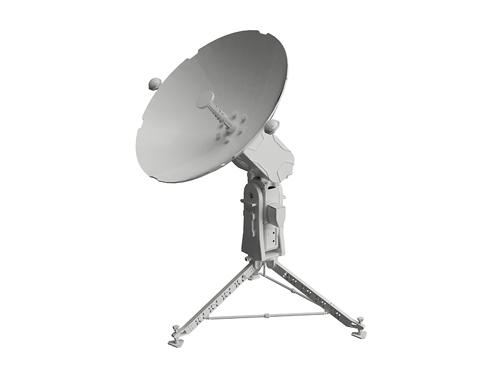- 2022-02-18 14:56:32

What LEO Satellite and PALS Solutions?
Have you ever wondered what is the meaning of the term LEO which is so popular recently and why? There are three most common satellite orbit distances used in satellite communication. They are named after the orbital distances from Eath’s surface:

GEO (Geosynchronous Equatorial Orbit)
An object in such an orbit has an orbital period equal to the Earth's rotational period, making it appear immobile to ground observers. It is 35,786 kilometers (22,236 miles) above the equator (42,164 kilometers in radius from Earth's center) and rotates in the same direction as the Earth.
TV Broadcasting, Internet, and Data Transfer are the most typical applications. However, it is confined to the coverage area of the satellite's transponder projection on Earth.
MEO (Medium Earth Orbit)
Geocentric orbits range in altitude from 2,000 kilometers (1,200 miles) to 35,786 kilometers, slightly below geosynchronous orbit (22,236 mi). With an orbital period of roughly 12 hours, GPS satellites orbit at a height of 20,200 kilometers (12,600 miles).
These are used for spacecraft that are part of the Global Navigation Satellite System, such as GPS, GLONASS, Galileo, and BeiDou.But it is limited to orbital period; you need at least 3 satellite in order to keep communication.
LEO (Low Earth Orbit)
The phrase LEO region also refers to the area of space below 2,000 km (1,200 mi) in altitude (about one-third of Earth's radius). Objects in orbit that pass through this zone are carefully tracked, even if their apogee is further out or they are sub-orbital, because they pose a collision danger to the many LEO satellites.
Most popular examples of use are The ISS (International Space Station), Iridium Satellite Phone services, Hubble Space Telescope, and the most famous of all SpaceX’s Starlink Project.
What are the Advantages and Challenges of LEO?
The smallest amount of energy is required to deploy a satellite in low Earth orbit. It has a lot of bandwidth and is quite fast. Crews and servicing are easier to reach on satellites and space stations in LEO. This is where LEO gaining it’s popularity; it makes much more feasible to deploy, operate and service costs. Therefore a lot of company, including PALS, are investing future to this orbit.
In contrast to geostationary satellites, LEO satellites have a narrow field of view, so they can only observe and communicate with parts of the Earth at the same time. Satellite control stations, Broadcasters and Common User’s requires to have really fast versions of motorized antennas.
Meet the Solutions of PALS
The PYX-100 Deployable X/Y Leo Tracking Antenna pedestal technology is specifically designed for quick-deployment LEO satellite tracking applications for short-term and permanent use. Designed around our proven X/Y technology precision antenna systems. It has as fast as Azimuth 5°/sec Elevation 5°/sec Polarization 4°/sec rotational speed with brushless motors in order to track the fast LEO satellites.
Thanks to PYX-100’s hardware such as dual GPS, 16-bit high accuracy resolvers and sophisticated software antenna can accurately track satellite using step-track and memory-track algorithm. So you never miss any satellite. For more information, questions or your inquiries: we would be more than happy to help you. Check PYX-100 page for more info and datasheet here: https://pals.com.tr/product/p-xy-100











